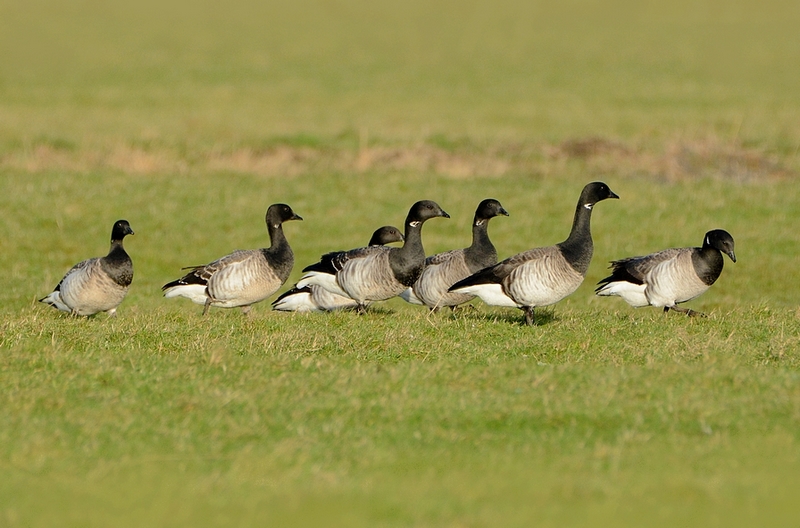Witbuikrotgans
Branta hrota · Pale-bellied Brent Goose
| Datum | 11 February 2016 |
|---|---|
| Locatie | Camperduin - Ver. Harger- en Pettemerpolder 08:53 |
| Fotograaf |
|
| Bekeken | 3349 × |
| Negen vogels gezien. |
Discussie
Max Berlijn
·
31 January 2023 07:22
Grey-Bellied Brent was ooit een hele discussie in de UK, toch?, ik hoorde er weinig meer over tot deze posting op Twitter.
Jan Hein van Steenis
·
31 January 2023 11:08
Er is geen vooruitgang in hoe deze vorm moet worden herkend of wat hij eigenlijk is. Ik denk dat je (gezien alle onduidelijkheid) een familiegroepje nodig hebt voor je aan vogels uit deze populatie kunt denken.
Via Birdforum, van de BBRC (2021):
"However, a fourth Brent Goose population, breeding mainly on Melville and Prince Patrick Islands in western High Arctic Canada, has also been described, though its taxonomic status remains uncertain and it has no scientific name.
It is generally known as ‘Grey-bellied Brant’ or ‘Western High-Arctic Brant’. Its appearance is stated to be highly variable, though combining features of both hrota and nigricans (leading to speculation that it might be an intergrade form), but it has been proposed as a valid taxon on the basis of preliminary DNA analysis as well as morphology (Shields 1990).
Lewis et al. (2013) and Reeber (2015) also recognised it as a distinct subspecies, noting further that the original nigricans type specimen resembles a ‘Grey-bellied Brant’. If this is the case then, under nomenclatural rules, ‘Grey-bellied Brant’ becomes nigricans, with ‘Black Brant’ adopting the already available name orientalis.
‘Grey-bellied Brant’ is not on the British List (an inevitable situation given its uncertain taxonomic status) but a number of birds apparently of this type have occurred in Ireland (Garner & Millington 2001) and several have been suspected in Britain (e.g. Hutt & Taylor 2006, McCallum 2020). Several claims have been received by BBRC and are currently held on file.
Given that its breeding range abuts that of Arctic Canadian hrota, it is clearly a potential vagrant to Britain and is most likely to occur with birds from that population or with other ‘northwestern’ geese. Other suspected ‘Grey-bellied Brants’ have reached the eastern United States but their identity remains under discussion (Buckley & Mitra 2002).
Observers of any putative ‘Grey-bellied Brant’ should pay particular attention to the upperpart tone, size of neck ‘collar’, neck/body contrast and precise underparts and flank pattern. However, the morphological limits of this form are not yet fully defined. Some birds may be so close in appearance to hrota or nigricans as to be indistinguishable from the extremes of variation in these subspecies whilst other actual or hypothetical Brent Goose intergrade combinations might also resemble birds from this population.
Intergradation between bernicla and nigricans and between bernicla and hrota has been noted (albeit rarely) so it seems likely that nigricans and hrota may intergrade also.
BBRC welcomes claims of this form though the committee is unable to progress submissions for the time being, pending clarification of its taxonomic position. However, even if this can be clarified, details of a ringed or marked bird might be necessary for formal acceptance.
Gebruikers van het forum gaan akkoord met de forumregels.

